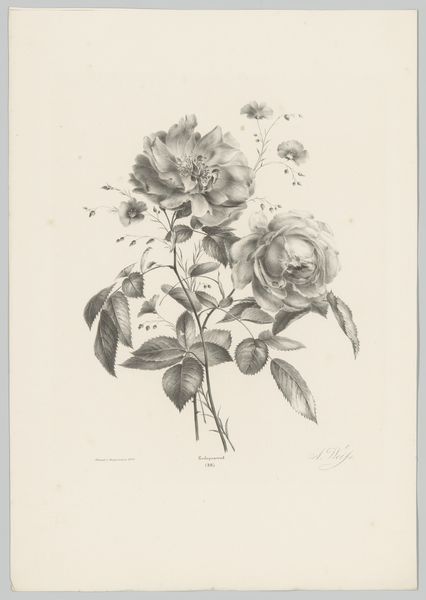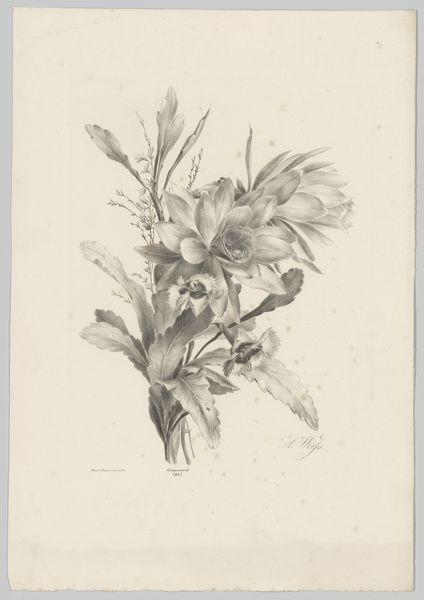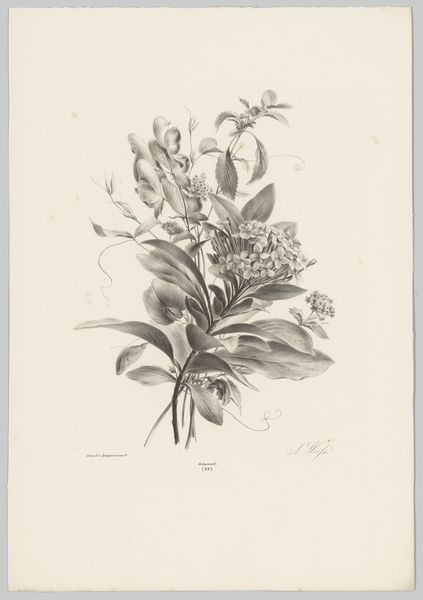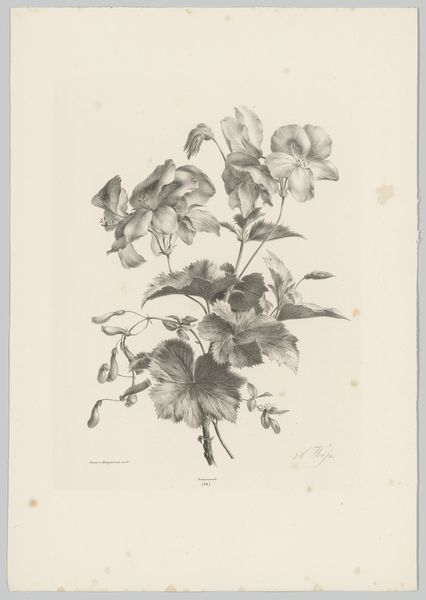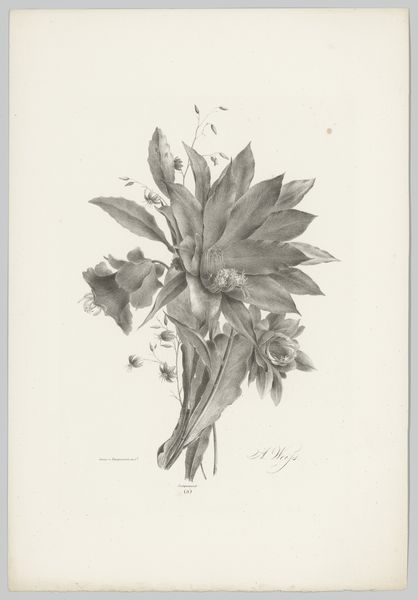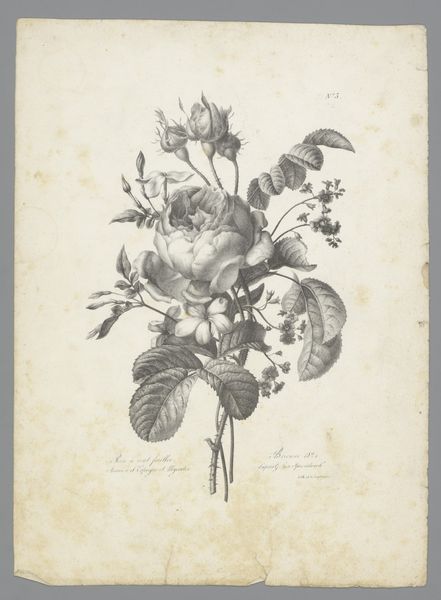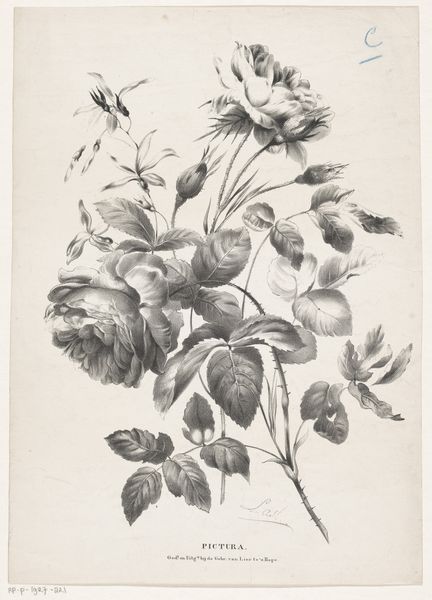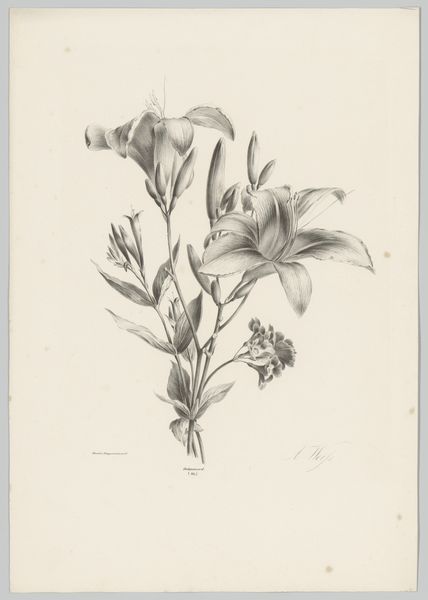
drawing, pencil
#
drawing
#
pencil sketch
#
romanticism
#
pencil
#
botanical art
#
watercolor
#
realism
Dimensions: height 430 mm, width 290 mm
Copyright: Rijks Museum: Open Domain
Editor: Here we have “Roses and Other Flowers,” a drawing by Anton Weiss from 1836. The rendering in pencil and watercolor is so delicate. The blooms almost seem to wilt right before my eyes, but I wonder, what do you make of a botanical study like this, in its historical context? Curator: It’s fascinating to consider its place within the history of botanical illustration, which served both scientific and aesthetic purposes. In the 19th century, botanical art was fueled by colonial expansion and a growing interest in cataloging the natural world. Do you think that the artist, Weiss, had purely scientific goals here? Or might social expectations for artistic subject matter come into play? Editor: It definitely feels more like a romantic vision of nature rather than clinical record-keeping. Was there a particular market for these types of images at the time? Curator: Absolutely. Consider the rise of illustrated books and the growing middle class. These images, often reproduced as prints, brought a touch of the exotic and refined into the home. Think about the social rituals surrounding flowers, like floral arrangements as demonstrations of status, even expressions of courting behavior. We must consider then how Weiss' drawing contributes to, or perhaps subverts, those social roles and power dynamics. Editor: So, this seemingly simple drawing could be intertwined with larger cultural and economic forces. Curator: Precisely. It pushes us to ask questions about the role of art in shaping our understanding and appreciation of the natural world, but also the subtle ways art reinforces societal structures. Editor: That’s given me a whole new perspective. It makes me think about the social narratives that get entwined with images of beauty, even today. Curator: Indeed. By questioning the 'why' behind art, we get a richer appreciation of art history’s value and continued influence.
Comments
No comments
Be the first to comment and join the conversation on the ultimate creative platform.
